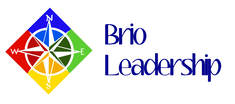Part one of Strategic planning for family-owned businesses “If you don’t know where you’re going, any road will take you there,” says an old aphorism. This is particularly true of small to mid-sized family businesses, many of which are figuratively taking whatever road presents itself. To know where you’re going in business means that you have created mission, vision, and values statements and a strategic plan. I often see smaller businesses that have grown because of the sheer energy and entrepreneurial brilliance of its founder. They come to me because they are stuck – they can’t seem to keep growing. Most often, I find the company has never created a strategic plan. Entrepreneurial minds may rebel against strategic planning because they don’t want to trade the agility of their nimble company for the stodginess of a large corporation. What these founders don’t realize is that there is freedom in form – again, if you don’t know where you’re going, any road will take you there. The form I’m referring to is a strategic plan. When you create a strategic plan, which is like a road map of where you are going, you have the freedom to make mid-course corrections. Just like when your GPS system will momentarily halt, saying, “Recalculating route”, so can you and your business recalculate as you are navigating. The benefits of creating a strategic plan are three-fold: 1) It helps you identify what strengths to capitalize on. 2) It helps you identify opportunities or customers you don’t want to pursue, saving you from pursuing unprofitable deals. 3) It refines your understanding of the market that you sell into and the products you offer. Peter Drucker states that strategy answers three questions: “What is the business? What will it be? What should it be?” These are the questions that mission, vision, and purpose statements answer. To create a strategic plan, you must choose what to do (and mostly importantly, what not to do), what customers to serve, and what needs you are going to meet (meaning what are you offering) at what price. How to create strategy? The first step is to brush off your mission, vision, and values statements and make sure they are still relevant and useful to the business. If not, now is the time to revise and refine them. There are many resources – in books and on the internet - to help you create those foundational statements. The next step is to set goals for the organization. Often, companies set revenue goals, as in “to reach $20M in sales by Dec 31, 2015.” Another organization might set an effectiveness goal. For example, “to decrease the number of women who die from breast cancer by 20% by 2020.” Goals should follow the oft-used acronym of SMART: they should be specific, measurable, achievable, relevant and time-dated. Then, create a SWOT (Strengths, Weaknesses, Opportunities and Threats) analysis. You could depict it in the traditional four-quadrant matrix, like this: Internal Environment: External Environment: Strengths Opportunities Weaknesses Threats You examine your organization’s strengths and weaknesses to determine your core competencies. Internal factors to consider include marketing, operational, and financial capabilities. Marketing capabilities include company reputation and brand, market share, promotion and sales efforts, pricing, and product positioning. Operational capabilities include physical assets, policies & procedures, IT resources, and HR practices. Financial capabilities encompass financial controls, cash flow, financial reports & ratios, and access to capital. All these elements can be considered in the internal column of the SWOT analysis. Identifying the opportunities and threats requires market and competitive research: studying customer’s needs and wants, price sensitivity, the competitive environment. In addition, analysis of the competition should investigate these factors: quality and price, marketing strategies, services provided, reputation and leadership. Take these considerations into account as you complete the external environment column of the matrix. By completing these steps, you have already defined your 3-5 year goal and have done a deep dive into your organization’s internal and external environment. You are well on your way to completing your strategic plan. Next time, we’ll continue the strategic planning process by identifying the type of strategy you wish to pursue. Stay tuned for the next installment in our Strategic Planning series. Kristin Robertson, CEO of Brio Leadership, is dedicated to increasing the number of employees who are excited to go to work on Monday mornings. Services include executive coaching, leadership development classes and company culture consulting. Don’t forget to get a copy of Kristin Robertson’s new book, Your Company Culture Ecosystem, available on Amazon.
0 Comments
|
From the desk of
|
Our services |
Our Company |

 RSS Feed
RSS Feed

